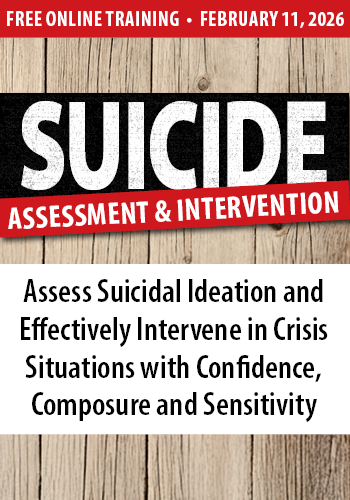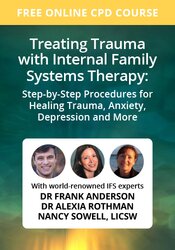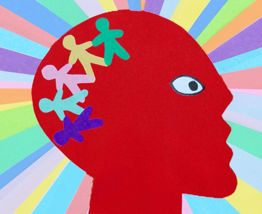Enrol in an online course today for flexible, self-paced learning—no fixed schedule required. Plus, enjoy lifetime access to course materials for convenient revisiting.
Navigating Dissociation: Therapists, Know Thyself!

Being formally diagnosed with Dissociative Disorder, NOS (‘not otherwise specified’) in 2004, following a trauma reaction that I experienced during my clinical training, opened up a whole new world of understanding. Dissociation was my constant companion growing up with developmental trauma, and this need I had to sever or escape the overwhelm of the moment later developed into a chemical addiction.
My personal EMDR Therapist, also trained in a plethora of other trauma-focused modalities, met my struggle in a gentle way. Guiding me through the realities of dissociation and how they play out in my life helped me feel so much less defective. And she empowered me with the knowledge that solutions were available in order for me to live a more adaptive life.
And then I sat through a professional presentation on dissociation as part of my Part II EMDR Therapy Training in 2006, and it felt like the presenter was speaking a foreign language. I remember thinking, “She seems to be making this way more complicated than it needs to be.” As I deepened my studies to become a better trauma therapist – all the while continuing with my own inner work to navigate my personal life as a recovering professional in a very toxic world – this sentiment kept coming up whenever I attended a training or conference presentation, or read a book, on dissociation.
I witnessed my colleagues and the EMDR students that I trained be even more afraid of dissociation. And I knew that if I was going to listen to my heart’s voice and start offering trainings on the psychological construct that I know most intimately, I’d have to get personal about it.
My fellow trauma therapists, I can never give you a step-by-step guide to working with dissociation in a clinical setting. Dissociative minds are so multi-faceted, unique, and often unpredictable in how they will present in a world filled with trauma triggers. I can equip you with some tools and best practices, yet no amount of these will assuage your fears about working with dissociation quite like knowing how you dissociate and how your internal world of parts may operate.
You do not have to qualify for a clinical diagnosis of any kind to engage in this inquiry, yet doing so can ultimately help you better normalise your clients’ experiences. There is nothing quite like when a professional doesn’t make us feel like we’re inherently dangerous or too much to handle.
Yes my friends, we all dissociate. Dissociation, which comes from a Latin root meaning to sever or to separate, is a normal part of the human experience. When the present moment becomes unpleasant, unbearable, or just down right painful, many facets of the human brain mobilise to protect us and to help us meet our needs. Sometimes dissociation happens by new parts being created to help us handle the gravity of an experience. Particularly if you’ve grown up in a highly stressful or downright traumatic environment, dissociation can become so automatic – you don’t even realise that you’re doing it. Yet even those among us who have gotten through life relatively unscathed still dissociate at times, whether that comes in the form of a simple daydream or perhaps talking too much to avoid really feeling our feelings.
An exercise to explore our own relationship with dissociation
Once we can get in touch with the ways that we dissociate, or sever, the prospect of working with highly dissociative clients can become far less intimidating. There is an exercise that I teach in my work called The Dissociative Profile where I challenge professionals to begin by taking an inventory on all of the ways that you have been known to sever from the present moment or yourself, and in response to what stressors?
The inventory continues by challenging you to look at what methods are most likely to bring you back into full present-moment awareness; even distinguishing which of these methods are adaptive (e.g., healthy or positive for you) and which may be more maladaptive or problematic.
Start here and notice what you notice. Engaging in this exercise honestly may help the existing training you’ve had on trauma and dissociation become clearer for you. Or you may feel the challenge to deepen your own work through personal therapy or other healing practices. You are doing yourselves, and your clients, such a great favour by engaging in this work and committing to work on whatever is revealed.


















